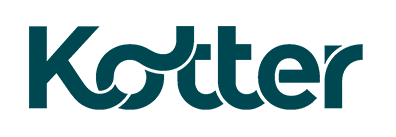If you were to ask any business leader if they want to build a company that is agile, innovative, and where employees act fast to seize opportunities, we suspect you would get a resounding yes. But what if this innovation and agility could only come by sacrificing, at least to an extent, robustness in performance, consistency in actions, and alignment on priorities? How might that change their answer?
This is the fundamental challenge businesses face today, the ability to achieve seemingly contradictory objectives. I say seemingly because what appear to be inherent trade-offs need not be. It is possible to have organizations that achieve:
- Agility without sacrificing robustness
- Creativity without foregoing consistency
- Agency without endangering outcomes
- Speed without losing sight of purpose
You might look at the list above and think the first part of each sentence describes a startup and the second is more aligned with an established business. Startups and entrepreneurial companies do typically operate in ways that are more flexible and agile – often at the expense of efficiency and reliability. As these firms mature, they adopt the managerial processes that are found in large businesses and that are often in conflict with the autonomy and flexibility that marked their earlier stage. Scaling successfully in today’s world of increasing uncertainty and constant disruption requires a new way of operating. While certainly not the full answer, for startups looking to scale, this requires breaking through some myths about how organizations are founded and how they grow.
- The first of these is a myth that attributes great businesses to a great idea that germinate fully formed in a founder’s mind. The reality is much more complicated. Businesses start, change, shift, and evolve, and selection bias suggests that we ignore the ones that do not successfully evolve and miss-diagnose the reasons for success in the ones that do. The way Marc Randolph, co-founder of Netflix, describes the origins of the company is very different than the popular story of the $40 late fee. In his memoir, he describes how he knew that “I wanted to start my own company, and that I wanted it to involve selling things on the internet.” In his own words “It’s absurd that one of the largest media companies in the world came from these two desires.” But is it actually absurd? Is this story of a wildly successful company emerging from an ill-formed, amorphous idea really atypical or is this the norm?
Good ideas often need to evolve to become great ideas that can form great businesses. Yes, executing well on a good idea matters and so does expecting that your offerings, ways of working, and underlying assumptions will likely need to change as the business grows and the external world changes. Leaders who expect this constant need to challenge ideas and make them better, look for input from their teams, which creates greater engagement – increasing the likelihood of successful execution. - The idea of visionary leaders who can see things that others can’t is the second myth that prevents many organizations from making good decisions. Study after study, or simply following forecasts made by pundits, have repeatedly shown that our ability to predict the future is, shall we say, imprecise. However, their continues to be a belief that the best leaders have an uncanny ability to forecast the future and predict what will be needed in 5 or 10 or even 15 years.
Stories about how a founder saw the potential of a particular market and therefore made a big bet that paid off are all too common. In some cases, this may well be true. But mostly these stories of clairvoyance don’t hold up to scrutiny. Bill Gates did not envision the importance of operating systems for personal computers before founding Microsoft. In fact, Microsoft’s first operating system was not released until 6 years after its founding. While at the macro level the story of foresight is somewhat true, Allen and Gates did see potential in the market for software and what became personal computers, however that was hardly a unique prediction.
What we have seen again and again, is that what makes a “visionary” leader is not incredible foresight but instead an ability to energize and excite employees so they are inspired to look for and act on threats and opportunities. These teams do not need to get their predictions right, because they are able to respond rapidly to changes in the market or context. - The third myth lies in the notion that the key to success is perseverance. Stay the course against the storm. These sentiments make good motivational posters, but are they helpful in today’s fast changing world? Success, indeed, requires an element of perseverance, but equally important is knowing when to change course and even when to give up on an idea or a plan. This myth, or maybe more misunderstood idea of perseverance, can cause companies to hold fast to strategies long after they are useful.
These three beliefs can prevent leaders from investing in what it takes to maintain agility and flexibility while enhancing efficiency and reliability. By overemphasizing the development of the right idea, right strategy, and right plan, under-calling the need for constant review and evolution, leaders can miss significant opportunities. From our research we know that the organizations that are best able to grow are those that have an adaptive culture, flexible management systems, and widespread skills to lead change.

